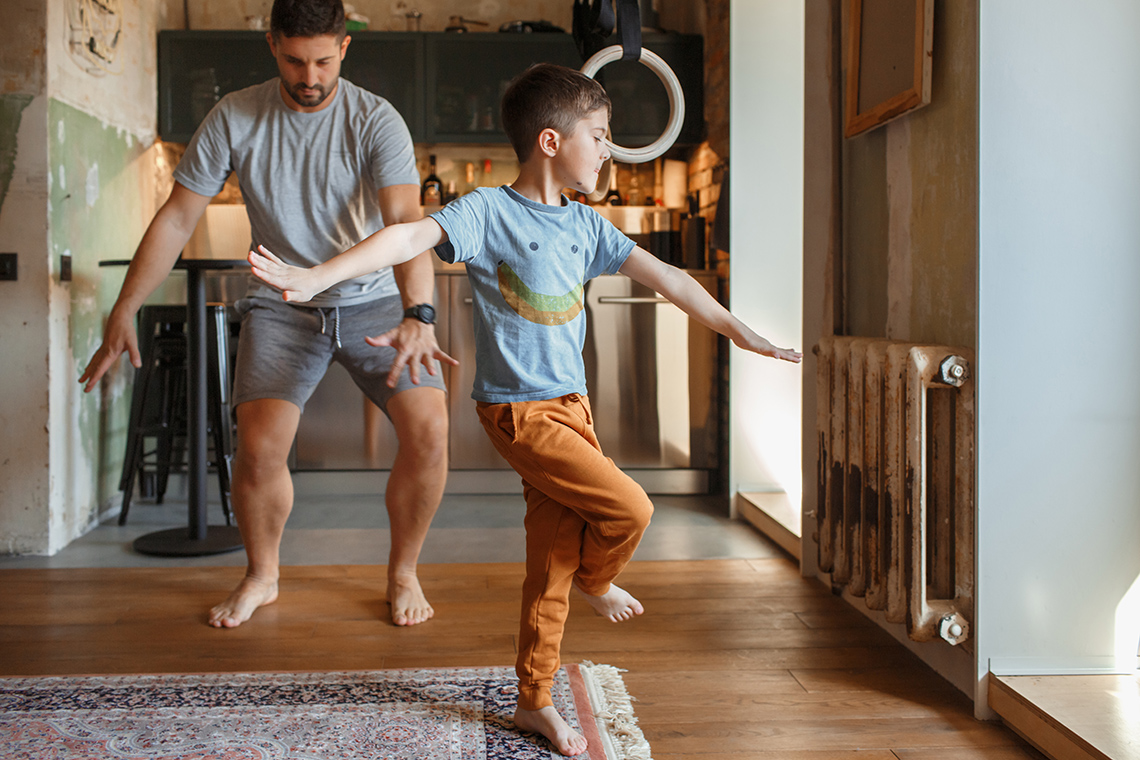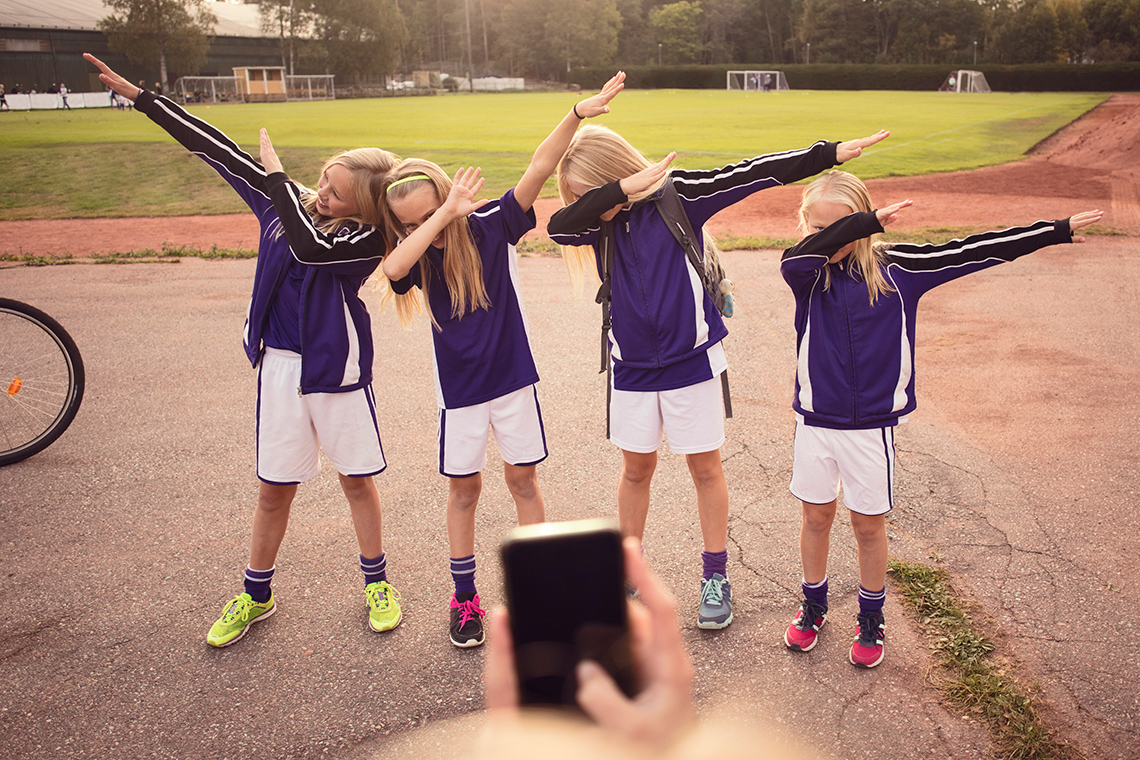Minds On
Today’s vocabulary
Dances or movements that experience short bursts of popularity in popular culture. Some dances or movements have a lasting impact.
Let’s get started!

Dance fads are dances or movements that experience short bursts of popularity in popular culture.
Some dances or movements have a lasting impact.
Consider the following video. Do you know this dance?
Did you recognize the dance? It is a dance called the “Moonwalk” that involves gliding backwards with your feet. The Moonwalk was a popular dance move in the 1980s and it is still used today!
Can you think of other examples of popular dance fads?
Action
Get ready, get set…
Task 1: Dance in popular culture

What do you know about popular culture?
Answer the following questions using a method of your choice.
- What is popular culture?
Press the 'Answer' button to reveal a possible answer to this question.
Popular culture is ideas or objects that become popular based on the tastes of the masses.
- What is an example of popular culture?
Press the 'Answer' button to reveal a possible answer to this question.
Social media, slang words, fashion trends, etc.
- How does a dance form become a trend or “trendy”?
Press the 'Answer' button to reveal a possible answer to this question.
A dance can become trendy through a popular music video or social media site.
Did You Know?
Trends over time
Popular culture is ideas or objects that become popular based on the tastes of the masses. It can be expressed in different ways including advertising, film, fashion, language or slang, music, and dance.
The media plays a huge role in something becoming trendy. This used to happen through television, movies, or radio. More recently, social media has played a role in making things “go viral.”
Some trends gain popularity and then disappear in a short period of time, while others stand the test of time and continue to be reinvented. Blue jeans are an example of a trend that has stood the test of time. They continue to be popular in fashion, but the cut and style continue to change and evolve over time.
Go!
Task 1: Exploring dance fads

Let’s explore some popular dance trends across the decades.
Press the tabs to learn about each dance trend.
The YMCA was a popular dance fad in the 1970s.
Check out the following video of a dancer performing the “YMCA.”
The YMCA dance comes from the song “YMCA,” which was written by the American disco group, the Village People, in 1978.
The band appeared on the TV show American Bandstand on January 6th, 1979, and while the group performed, the studio audience would create the letters with their bodies every time the group sang the chorus.
The dance has remained popular to this day and is often performed at weddings, sporting events, and other social events.
The “Running Man” was a popular dance fad in the 1980s.
Check out the following video of some dancers performing the Running Man.
The Running Man was a fad dance that is believed to have originated in 1986. It was most notably performed by Janet Jackson in the video for her song, “Rhythm Nation,” in 1989.
The Running Man has also been performed by other famous singers at the time, such as MC Hammer.
“Voguing” was a popular dance fad in the 1990s.
Check out the following video of some dancers Voguing.
Voguing generally involves dance moves inspired by fashion poses, such as those on the front cover of Vogue magazine (hence the name). The movements are often geometric and involve mostly the upper body.
While the exact origins of Voguing are disputed, it has been around since at least the 1960s and emerged out of the Harlem ballroom culture. It was originally danced mostly by the Black 2SLGBTQIA+ community and often performed during drag competitions.
Pause and Reflect
Personal response
Use the following questions to reflect on your learning so far. Record your responses using a method of your choice.
- What do you notice that is common across the decades?
- Which dance resonated with you the most? Why?
- Choose one of the dances we explored. Why do you think this dance became popular?
- Did you notice any similarities in terms of how and where these dances came about?
Consolidation
Putting it all together
Task 1: Researching current trends

“The dab” is an example of a dance trend.
In this learning activity, we explored popular dance trends from North America in the 1970s, ‘80s, and ‘90s. How did dance fads continue to evolve into the 2000s?
Research a current dance trend that you are interested in learning more about. Some examples include:
- the dab
- the whip/nae nae
- a TikTok dance
- another current dance of your choice
Through your research, try to answer the following questions. You can record your ideas using a method of your choice.

- Why do you think this dance move has become part of popular culture?
- How has this dance become popular?
- What about this dance is appealing to the audience?
- What was the cultural or historical context around this form of dance?
When researching your chosen dance form, it is important that you begin your search using websites, videos, audio recordings or print resources from the community you are studying, Canadian encyclopedia websites, or Canadian Arts organizations’ websites.
Student Tips
Thinking critically about using websites
Websites ending with .com, .org, and .net can be created and used by any person. Be careful when using these websites and ask yourself if these websites are credible or have bias. The ending .org are usually used by non-profit organizations, which may have an agenda of persuasion rather than education.
Websites ending in .edu are reserved for colleges and universities. Canadian websites have a .ca ending. It is important to consider using credible Canadian websites for research when possible!

Portfolio
Review your learning
Use the following questions to reflect on your learning and research.
- Whose perspectives do you think are usually represented in popular culture?
- Whose perspectives do you think might be missing? Why?
Record your responses using a method of your choice. Consider adding your work to your portfolio.
Reflection
As you read through these descriptions, which sentence best describes how you are feeling about your understanding of this learning activity? Press the button that is beside this sentence.
I feel…
Now, record your ideas using a voice recorder, speech-to-text, or writing tool.